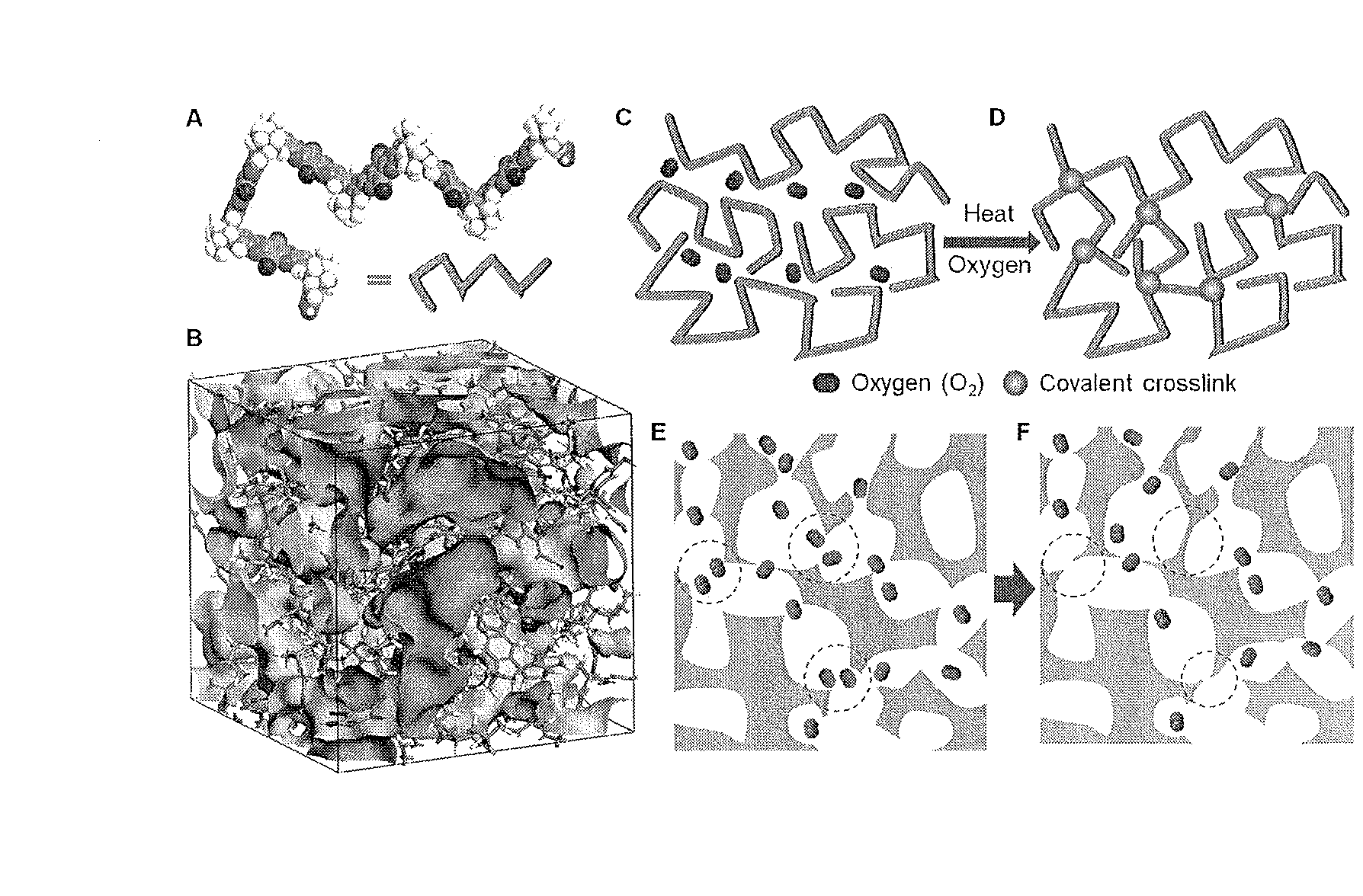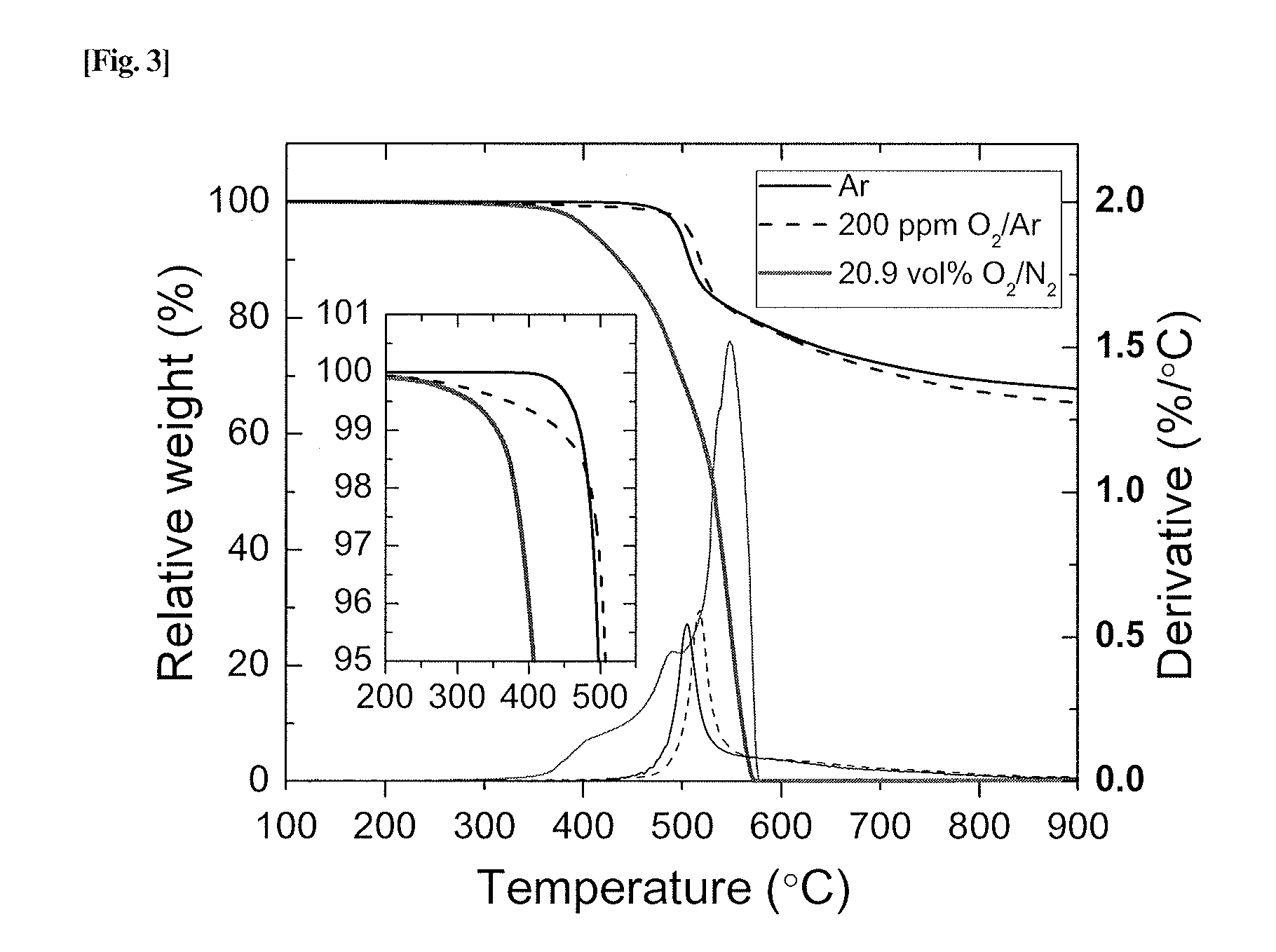Crosslinked polymer, method for producing the same, molecular sieve composition and material separation membranes
- Summary
- Abstract
- Description
- Claims
- Application Information
AI Technical Summary
Benefits of technology
Problems solved by technology
Method used
Image
Examples
examples
[0156]The present invention is described in further detail with reference to Examples and Comparative Examples. However, the scope of the invention is not limited to these Examples.
[0157]Materials and Methods
[0158]Synthesis of PIM-1
[0159]The PIM-1 polymer was synthesized following the method invented by Budd and McKeown. A one-step polycondensation via a double aromatic nucleophilic substitution from purified monomers, 5,5′,6,6′-tetrahydroxy-3,3,3′,3′-tetramethylspirobisindane (TTSBI, 30 mmol) and 2,3,5,6-tetrafluoroterephthalonitrile (TFTPN, 30 mmol), was performed in the presence of K2CO3 (60 mmol) in anhydrous dimethylformamide (200 mL) at 60° C. for about 48 h. The polymer was purified by dissolving in chloroform and re-precipitation from methanol, filtered and dried in vacuum oven at 110° C. for overnight. The molecular weight was determined from gel permeation chromatography (GPC).
[0160]Preparation of Polymer Membrane
[0161]The polymer was dissolved in a solution of chloroform ...
PUM
| Property | Measurement | Unit |
|---|---|---|
| Temperature | aaaaa | aaaaa |
| Temperature | aaaaa | aaaaa |
| Fraction | aaaaa | aaaaa |
Abstract
Description
Claims
Application Information
 Login to View More
Login to View More - Generate Ideas
- Intellectual Property
- Life Sciences
- Materials
- Tech Scout
- Unparalleled Data Quality
- Higher Quality Content
- 60% Fewer Hallucinations
Browse by: Latest US Patents, China's latest patents, Technical Efficacy Thesaurus, Application Domain, Technology Topic, Popular Technical Reports.
© 2025 PatSnap. All rights reserved.Legal|Privacy policy|Modern Slavery Act Transparency Statement|Sitemap|About US| Contact US: help@patsnap.com



